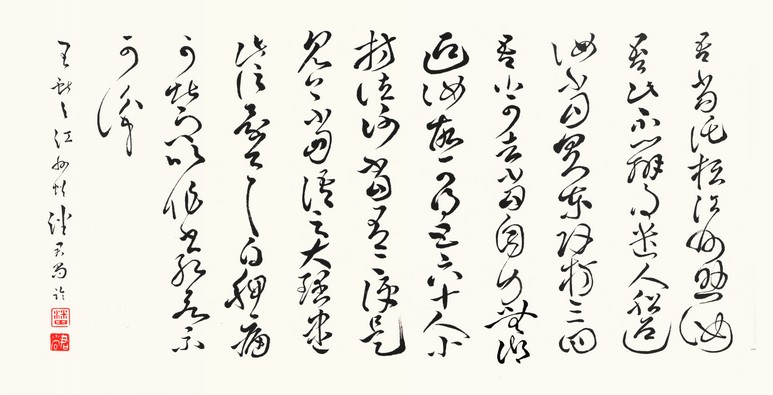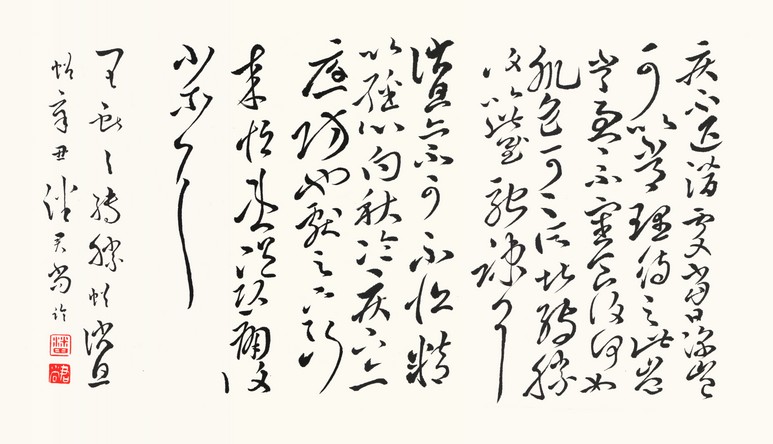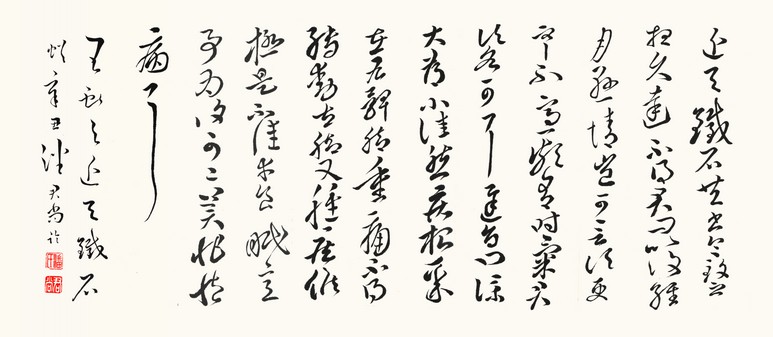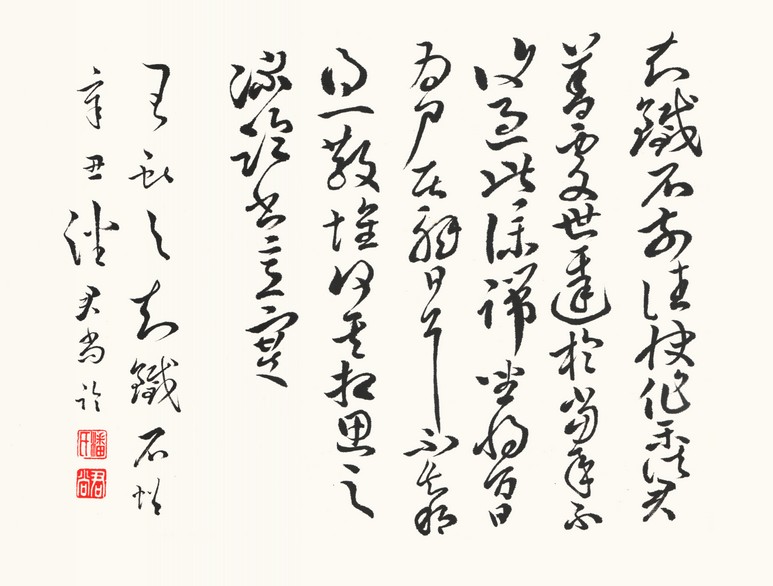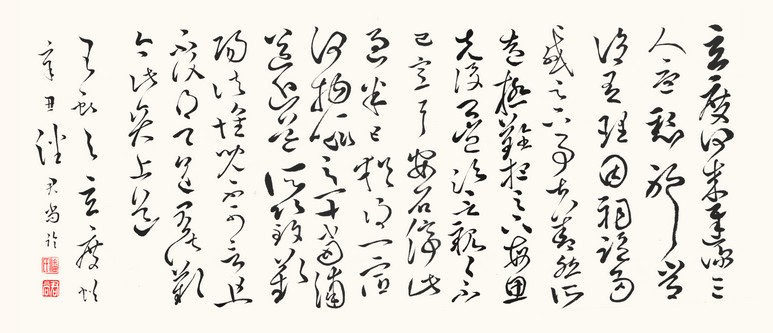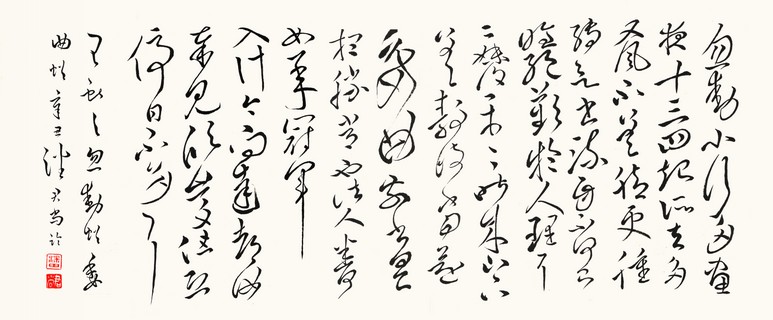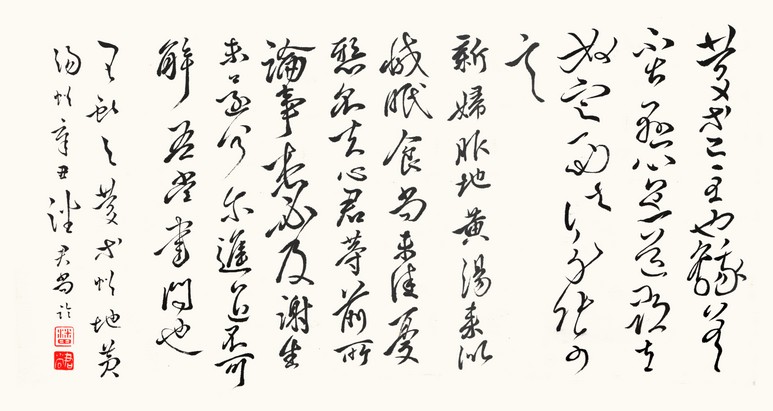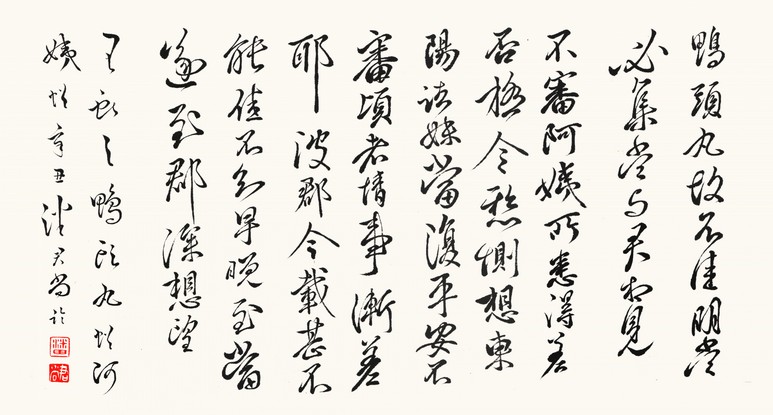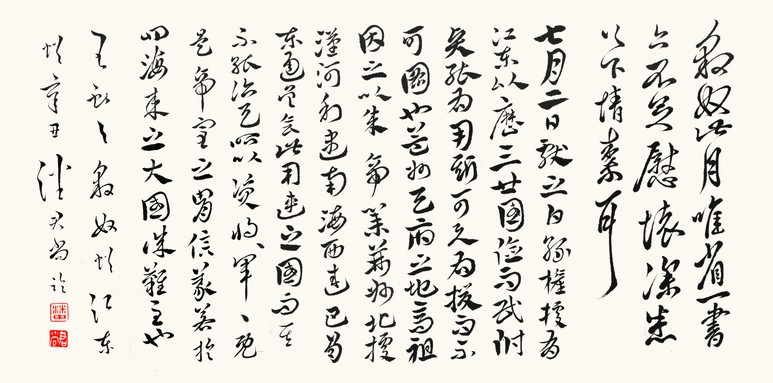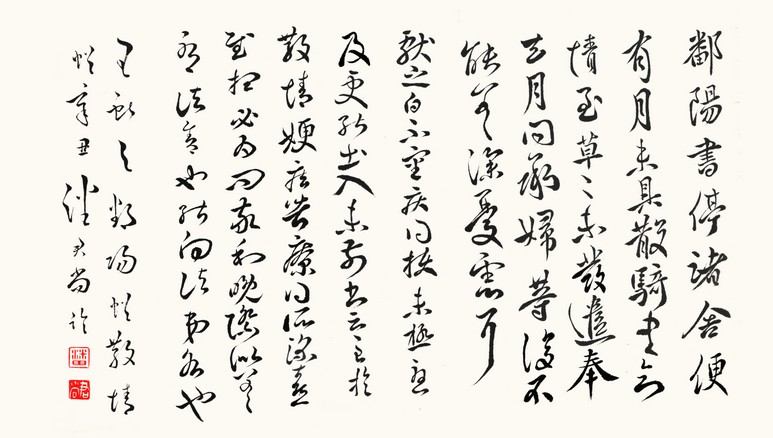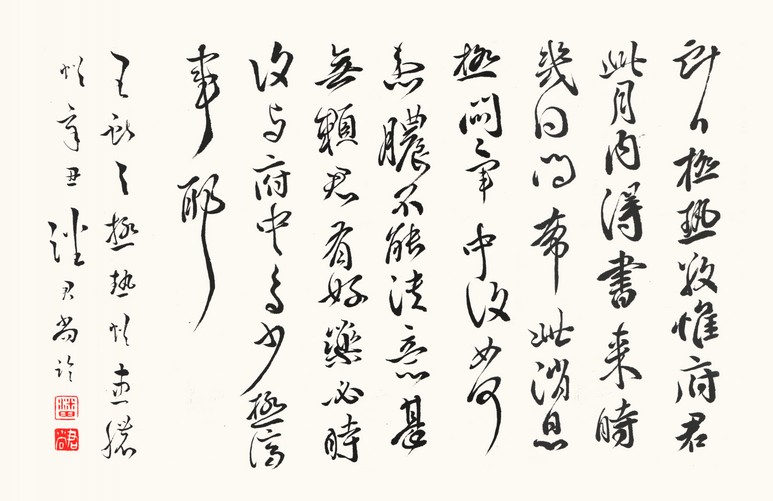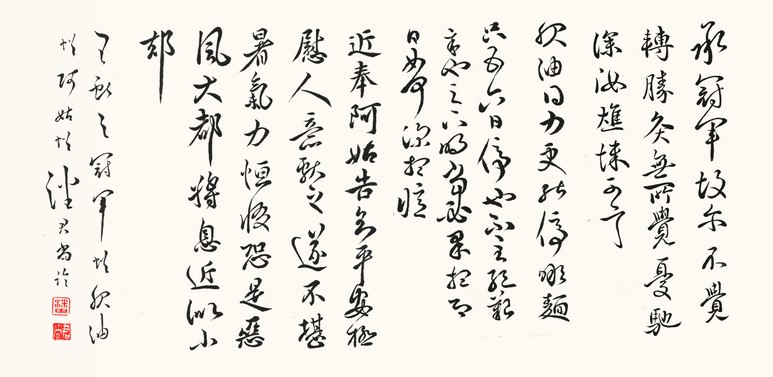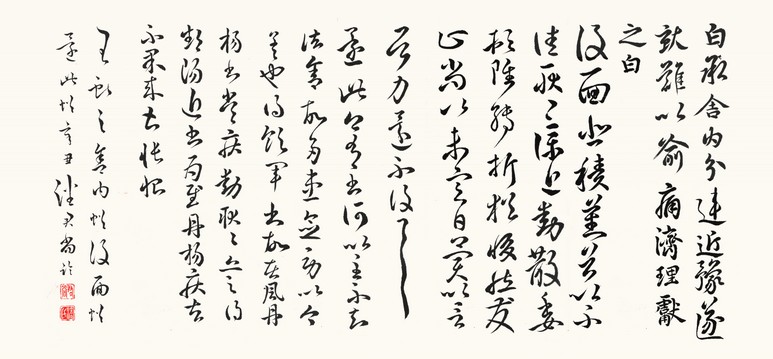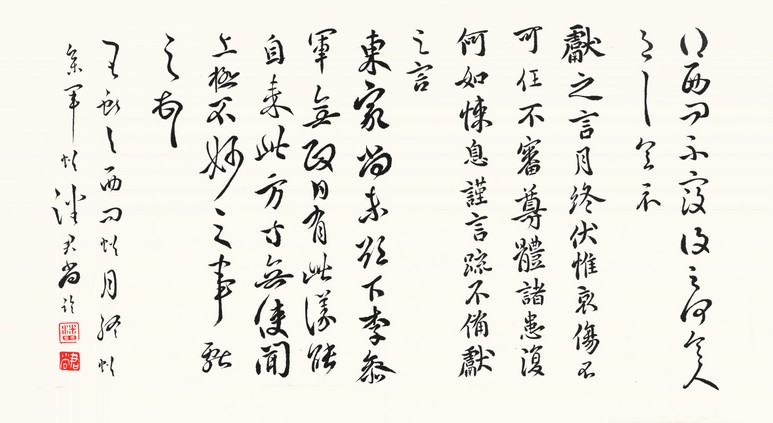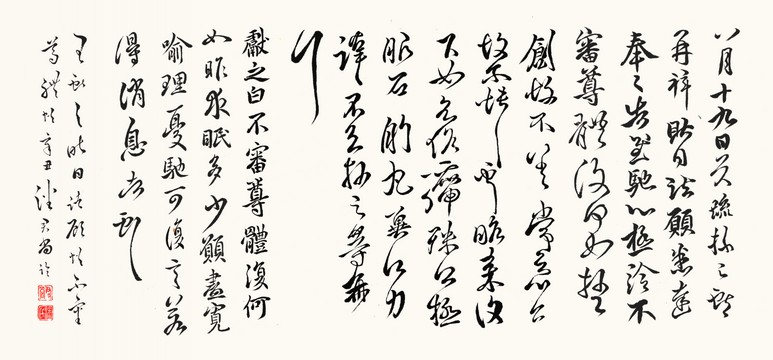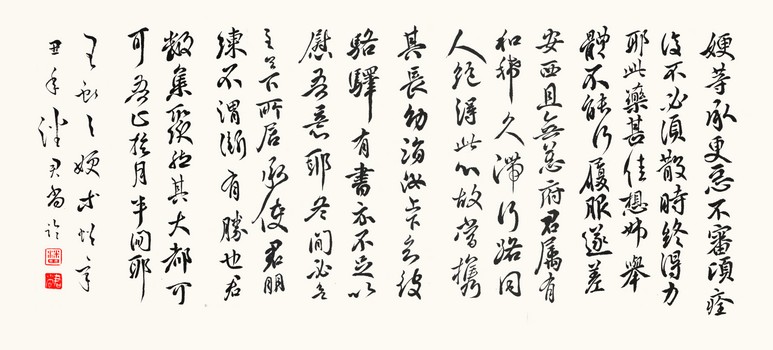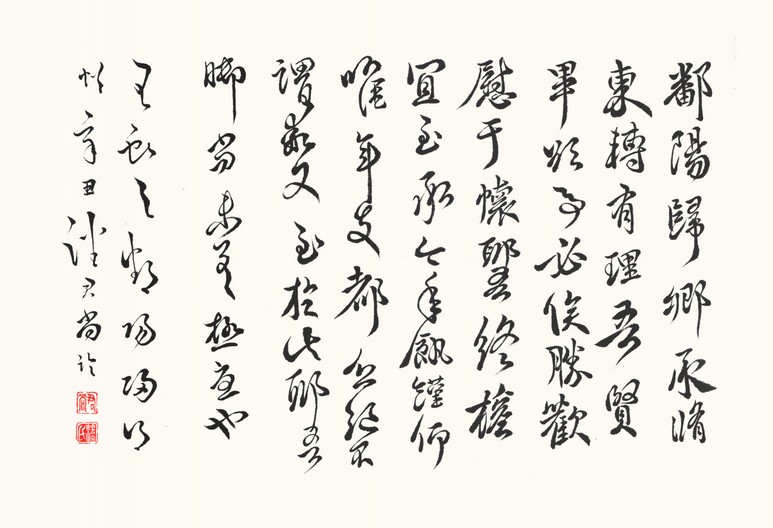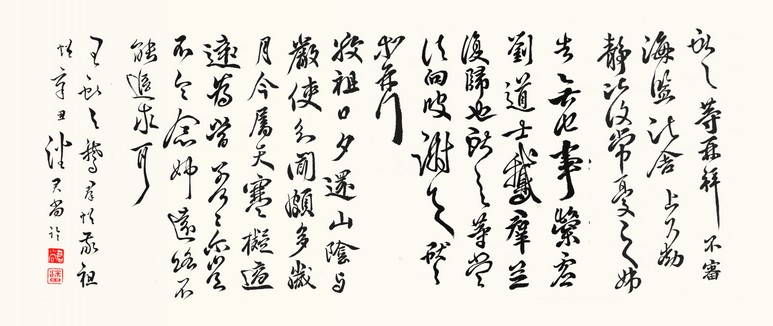Galleries and Translations > Models of Masterpieces > Models of Masterpieces by Wang Xianzhi (part IV ) 臨王獻之諸法帖 (第四部份)
Models of miscellaneous Exemplary Masterpieces by Wang Xianzhi (part IV ) 臨王獻之諸法帖 (第四部份)
Historical information
(I)
Wang Xianzhi (王獻之, 344-386AD) was the seventh son of “The Sage of Calligraphy (書聖)” Wang Xizhi (王羲之, 303–361AD). At an early age of seven, his extraordinary talents in calligraphy had already been recognized by his father (七八歲時學書,羲之密從後掣其筆不得,歎曰:「此兒後當復有大名。」)(1). Although he later developed a rather unrestraint and unconventional personality (高邁不羈…風流為一時之冠) (2), his cursive and standard scripts were widely admired (工草隸)(3) for their liberating and serene demeanours (逸氣縱橫)(4). Thus, along with his father, he was regarded as one of the Four Talents (四賢) in the art of Chinese calligraphy(5).
(II)
Despite Wang Xianzhi’s brilliance, his calligraphy was not without criticism. The Book of Jin narrated that his calligraphy lacked strength and sturdiness compared to that of his father (獻之骨力遠不及父)(6). Sun Guoting, in his Narrative on Calligraphy, went even further to chastized his arrogance and thus concluded that his art was undoubtedly inferior to his father’s (子敬之不及逸少,無或疑焉)(7). Such criticisms serve as good reminders that the ultimate foundation of Chinese calligraphy is the refinement of temperaments, not techniques(8).
(III)
The calligraphies presented below are my models of Wang Xianzhi's handwriting found in Chunhua Imperial Archive of Calligraphy Exemplars (《淳化閣帖》). Supposedly, these handwritings were short letters and memos scribed by Wang. Although their authenticities are questionable, they are still often regarded as Exemplary Masterpieces (法帖) for calligraphers to study and observe. In the art of Chinese calligraphy, "帖(pronounced as Tie)" refers to an exemplary work that should be studied by all .
(IV)
Since the originals in the Chunhua Imperial Archive of Calligraphy Exemplars (《淳化閣帖》) can be parts of or whole letters/memos scribed by Wang, translations that are provided below, if available, may not be entirely precise, for they can be interpreted out of context. Further, whether Wang had actually scribed them remains questionable. Accordingly, scholars should be wary of using these as authentic historical references.
____________________________________________
(1) 房玄齡,《晉書》卷八十王羲之列傳. 北京:中華書局, 1974, p.2105.
(2) Ibid., p.2104.
(3) Ibid., p.2104.
(4) 張懷瓘《書斷》. 《歷代書法論文選》. 上海: 上海書畫出版社, 1979, p.164.
(5) KS Vincent Poon & Kwok Kin Poon, A Narrative on Calligraphy by Sun Guoting Revised and Enhanced Edition 英譯書譜 增訂版. Toronto: The SenSeis, 2019, pp.9-10.
(6) 房玄齡,《晉書》卷八十王羲之列傳. 北京:中華書局, 1974, p.2106.
(7) KS Vincent Poon & Kwok Kin Poon, A Narrative on Calligraphy by Sun Guoting Revised and Enhanced Edition 英譯書譜 增訂版. Toronto: The SenSeis, 2019, p.15.
A model of Jiang Zhou Tie (江州帖)
35 X 69 cm
Click to Enlarge. Reserved, not available in shop.
Jiang Zhou Tie (江州帖):
Original Classical Chinese:
吾當托桓江州助汝。吾此不辨得遣人船迎汝。當具東改枋三四。吾小可者,當自力無湖迎汝。故可得五六十人小枋。諸謝當有。有便是見。今當語之。大理盡此。信還一一白。胛痛可堪。而比作書紀若不可識。
English: NA. The entire phrase may not be translated, for the context in which it was written is unknown or uncertain.
A model of Zhuan Sheng Tie (轉勝帖) and Xiao Xi Tie (消息帖)
35 X 61 cm
Click to Enlarge. Reserved, not available in shop.
Zhuan Sheng Tie (轉勝帖):
Original Classical Chinese: 疾不退,潛處當日深。豈可以常理待之。此豈常憂憂。不審食復何如。肌色可可。所堪轉勝。復以此慰馳竦耳。
English: NA. The entire phrase may not be translated, for the context in which it was written is unknown or uncertain.
Xiao Xi Tie (消息帖):
Original Classical Chinese: 消息亦不可不恒精以經心。向秋冷疾下。亦應防也。獻之下斷來。恒患濕頭痛。複小爾耳。
English: NA. The entire phrase may not be translated, for the context in which it was written is unknown or uncertain.
A model of Jin Yu Tieshí Tie (近與鐵石帖)
35 X 81 cm
Click to Enlarge. Reserved, not available in shop.
Jin Yu Tieshí Tie (近與鐵石帖):
Original Classical Chinese: 近與鐵石共書。令致之想久,達不得。君問以復經月。懸情豈可言。頃更寒不適。頗有時氣。君頃各可耳。遲旨問。僕大都小佳。然疾根聚在右脾腳,重痛不得轉動。左腳又腫疾。侯極是不佳。幸食眠意事,為復可可。冀非臧病耳。
English: NA. The entire phrase may not be translated, for the context in which it was written is unknown or uncertain.
A model of Zhi Tie Shi Tie (知鐵石帖)
35 X 46 cm
Click to Enlarge. Reserved, not available in shop.
Zhi Tie Shi Tie (知鐵石帖):
Original Classical Chinese: 知鐵石前往快作樂。諸君善處世達於當年,不復過此。僕端坐將百日,為尸居解日耳。不知那得一散懷。何其相思之深。臨書意塞。
English: NA. The entire phrase may not be translated, for the context in which it was written is unknown or uncertain.
A model of Xuan Du He Lai Tie (玄度何來帖)
35 X 82 cm
Click to Enlarge. Reserved, not available in shop.
Xuan Du He Lai Tie (玄度何來帖):
Original Classical Chinese: 玄度何來遲,深令人憂懸耶。常復有理。因祠監多。感足下事甚善。然所造極難。想足下每思先後。卿豈須言親親。不已意耳。安石停此過半日,猶得一宿。一十當浦送。 近道所以致嘆陽。諸懷兒不可言。且不復得卿送。有此嘆。令此弈上道。
English: NA. The entire phrase may not be translated, for the context in which it was written is unknown or uncertain.
A model of Hu Dong Tie (忽動帖) and Wei Qu Tie (委曲帖)
35 X 85 cm
Click to Enlarge. Reserved, not available in shop.
Hu Dong Tie (忽動帖):
Original Classical Chinese: 忽動小行多,晝夜十三四起,所去多。又風不差。腳更腫,轉欲書疏,自不可已。唯絕嘆於人理耳。二妹復平平,昨來山下差靜,岐當還。
English: NA. The entire phrase may not be translated, for the context in which it was written is unknown or uncertain.
Wei Qu Tie (委曲帖):
Original Classical Chinese: 委曲前書。具書勝常也。諸人悉何如。承冠軍,定入。計今向達都,汝奉。見欣慶。但恐停日不多耳。
English: NA. The entire phrase may not be translated, for the context in which it was written is unknown or uncertain.
A model of Qing Deng Tie (慶等帖) and Di Huang Tang Tie (地黃湯帖)
35 X 66 cm
Click to Enlarge. Reserved, not available in shop.
Qing Deng Tie (慶等帖):
Original Classical Chinese: 慶等已至也。鵝差。不甚懸心。直道尋去。奴定西。諸分張少言。
English: NA. The entire phrase may not be translated, for the context in which it was written is unknown or uncertain.
Di Huang Tang Tie (地黃湯帖):
Original Classical Chinese: 新婦服地黃湯來,似減眠食。尚未佳。憂懸不去心。君等前所論事,想必及。謝生未還。何爾進退不可解,吾當書問也。
English: NA. The entire phrase may not be translated, for the context in which it was written is unknown or uncertain.
A model of Ya Tou Wan Tie (鴨頭丸帖) and A Yi Tie (阿姨帖)
35 X 66 cm
Click to Enlarge. Reserved, not available in shop.
Ya Tou Wan Tie (鴨頭丸帖):
Original Classical Chinese: 鴨頭丸故不佳。明當必集。當與君相見。
English: NA. The entire phrase may not be translated, for the context in which it was written is unknown or uncertain.
A Yi Tie (阿姨帖):
Original Classical Chinese: 不審阿姨所患得差否。極令懸惻。想東陽諸妹當復平安。不審頃者情事漸差耶。 彼郡今載甚不能佳。不知早晚至。當遂至郡。深想望。
English: NA. The entire phrase may not be translated, for the context in which it was written is unknown or uncertain.
A model of Bao Nu Tie (豹奴帖) and Jiang Dong Tie (江東帖)
35 X 71 cm
Click to Enlarge. Reserved, not available in shop.
Bao Nu Tie (豹奴帖):
Original Classical Chinese: 豹奴此月唯省一書。亦不足慰懷。深悉足下情素耳。
English: NA. The entire phrase may not be translated, for the context in which it was written is unknown or uncertain.
Jiang Dong Tie (江東帖):
Original Classical Chinese: 七月二日,獻之白。孫權據有江東,以歷三世。國險而民附,賢能為用。斯可與為援,而不可圖也。益州天府之地,高祖因之以成帝業。荊州北據漢河,利盡南海,西連巴蜀,東通吳會。此用武之國,而其不能治。天所以資將軍,將軍既是帝王之冑。信義著於四海。來之大國,誠難至也。
English: NA. The entire phrase may not be translated, for the context in which it was written is unknown or uncertain.
A model of Po Yang Tie (鄱陽帖) and San Qing Tie (散情帖)
35 X 62 cm
Click to Enlarge. Reserved, not available in shop.
Po Yang Tie (鄱陽帖):
Original Classical Chinese: 鄱陽書,停諸舍便有月。未具,散騎書,知情至。草草未發遣,奉去月問。承婦等復不能差。深憂慮耳。
English: NA. The entire phrase may not be translated, for the context in which it was written is unknown or uncertain.
San Qing Tie (散情帖):
Original Classical Chinese: 獻之白。不審疾得損未。極憂及。更能出入未。前書云至於散情,㛐疾苦療得。所深喜慰。想必為問。敬和晚際,似差耶。諸舍也能向諸弟各也。
English: NA. The entire phrase may not be translated, for the context in which it was written is unknown or uncertain.
A model of Ji Re Tie (極熱帖) and Huan Nong Tie (患膿帖)
35 X 54 cm
Click to Enlarge. Reserved, not available in shop.
Ji Re Tie (極熱帖):
Original Classical Chinese: 獻之白。極熱。敬惟府君,此月內得書。來時幾得問。希此消息。極悶悶。軍中複如何。
English: NA. The entire phrase may not be translated, for the context in which it was written is unknown or uncertain.
Huan Nong Tie (患膿帖):
Original Classical Chinese: 患膿不能潰。意甚無賴。君有好藥必時復與。府中多少,極濟事耶。
English: NA. The entire phrase may not be translated, for the context in which it was written is unknown or uncertain.
A model of Guan Jun Tie (冠軍帖), Fu Jou Tie (服油帖), and A Gu Tie (阿姑帖)
35 X 81 cm
Click to Enlarge. Reserved, not available in shop.
Guan Jun Tie (冠軍帖):
Original Classical Chinese: 承冠軍故爾,不覺轉勝。灸無所覺。憂馳深。汝燋悚可言。
English: NA. The entire phrase may not be translated, for the context in which it was written is unknown or uncertain.
Fu Jou Tie (服油帖):
Original Classical Chinese: 服油得力,更能停噉麵。只五六日停也。不至絕艱辛也。足下明當必果。想即日如何。深想憶。
English: NA. The entire phrase may not be translated, for the context in which it was written is unknown or uncertain.
A Gu Tie (阿姑帖):
Original Classical Chinese: 近奉阿姑告知平安。極慰人意。獻之遂不堪暑。氣力恆惙,恐是惡風。大都將息近似小却。
English: NA. The entire phrase may not be translated, for the context in which it was written is unknown or uncertain.
A model of She Nei Tie (舍內帖), Fu Mian Tie (復面帖), and Hai Ci Tie (還此帖)
35 X 76 cm
Click to Enlarge. Reserved, not available in shop.
She Nei Tie (舍內帖):
Original Classical Chinese: 白。承,舍內分違。近豫遂就難以喻。痛濟理。獻之白。
English: NA. The entire phrase may not be translated, for the context in which it was written is unknown or uncertain.
Fu Mian Tie (復面帖):
Original Classical Chinese: 復面悲積。蕃首以不佳。耿耿。僕近動散委 頓。雖轉折猶惙然,發止尚以未定日。冀以言居。力還。不復一一。
English: NA. The entire phrase may not be translated, for the context in which it was written is unknown or uncertain.
Hai Ci Tie (還此帖):
Original Classical Chinese: 還此今有書何。以至不。知諸舍故多患念勞。以今差也。得領軍書。故苦風。丹楊書,常疾動,耿耿。亦云,得鄱陽近書,為慰。丹陽疾苦不果來。甚悵悵。
English: NA. The entire phrase may not be translated, for the context in which it was written is unknown or uncertain.
A model of Xi Wen Tie (西問帖), Yue Zhong Tie (月終帖), and Can Jun Tie (參軍帖)
35 X 64 cm
Click to Enlarge. Reserved, not available in shop.
Xi Wen Tie (西問帖):
Original Classical Chinese: 得西問不。冠後云何。令人邑邑。具示。
English: NA. The entire phrase may not be translated, for the context in which it was written is unknown or uncertain.
Yue Zhong Tie (月終帖):
Original Classical Chinese: 獻之言。月終。伏惟哀傷不可任。不審尊體諸患復何如。 悚息謹言疏。不備。獻之言。
English: NA. The entire phrase may not be translated, for the context in which it was written is unknown or uncertain.
Can Jun Tie (參軍帖):
Original Classical Chinese: 東家尚未欲下。李參軍無政。日有此議。能自來。此方寸無使聞上。極不妙之事。獻之頓首。
English: NA. The entire phrase may not be translated, for the context in which it was written is unknown or uncertain.
A model of Zuo Ri Zhu Yuan Tie (昨日諸願帖) and Bu Shen Zun Ti Tie (不審尊體帖)
35 X 76 cm
Click to Enlarge. Reserved, not available in shop.
Zuo Ri Zhu Yuan Tie (昨日諸願帖):
Original Classical Chinese: 八月十九日,具疏。操之獻之再拜。昨日諸願悉達奉。奉告慰馳心。極冷。不審尊體復何如。操之創故不差。常惡。公故爾怏怏。獻之昨來復下。如欲作㿃。殊乏極。服石的丸,冀得力。謹白。不具。操之等再拜。
English: NA. The entire phrase may not be translated, for the context in which it was written is unknown or uncertain.
Bu Shen Zun Ti Tie (不審尊體帖):
Original Classical Chinese: 獻之白。不審尊體復何如。昨夜眠多少。願盡寬喻理。憂馳可復言。若得消息者。獻之。
English: NA. The entire phrase may not be translated, for the context in which it was written is unknown or uncertain.
A model of Sao Deng Tie (嫂等帖)
35 X 78 cm
Click to Enlarge. Reserved, not available in shop.
Sao Deng Tie (嫂等帖):
Original Classical Chinese: 嫂等,承更惡。不審頃痊復不。必須散時。終得力耶。此藥甚佳。想姉舉體不能行履,服遂差。安西且無恙。府君屬有和稀。久滯。行路同人,絕得此心。故當攜其長幼詣。汝上下知彼駱驛。有書示。不足以慰吾意耶。冬間必欲至足下所居。承使君明練。不謂漸有勝也。君數集聚。然其大都可耳。吾止於月半間耶。
English: NA. The entire phrase may not be translated, for the context in which it was written is unknown or uncertain.
A model of Po Yang Gui Xiang Tie (鄱陽歸鄉帖)
35 X 51 cm
Click to Enlarge. Reserved, not available in shop.
Po Yang Gui Xiang Tie (鄱陽歸鄉帖):
Original Classical Chinese: 鄱陽歸鄉。承脩東轉有理,吾賢畢欲事必俟勝。歡慰於懷耶。吾終權宜至。承,今年飢饉。仰惟年支都乏絕。不謂,乖又至於此耶。吾腳尚未差,極憂也。
English: NA. The entire phrase may not be translated, for the context in which it was written is unknown or uncertain.
A model of E Qun Tie (鵝群帖) and Jin Zu Tie (敬祖帖)
35 X 84 cm
Click to Enlarge. Reserved, not available in shop.
E Qun Tie (鵝群帖):
Original Classical Chinese: 獻之等再拜。不審海鹽諸舍,上下動靜。比復常憂之。姉告無他事。崇虛劉道士鵝群竝復歸也。獻之等當須向彼謝之。獻之等再拜。
English: NA. The entire phrase may not be translated, for the context in which it was written is unknown or uncertain.
Jin Zu Tie (敬祖帖):
Original Classical Chinese: 敬祖日夕還山陰。與嚴使君聞。頗多歲月。今屬天寒。擬適遠。為當奈何奈何爾。豈不令念姉。遠路不能追求耳。
English: NA. The entire phrase may not be translated, for the context in which it was written is unknown or uncertain.
